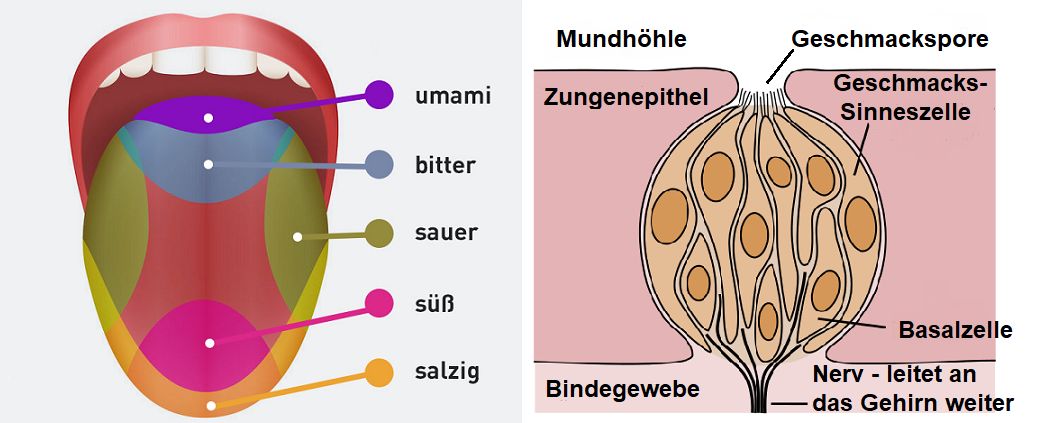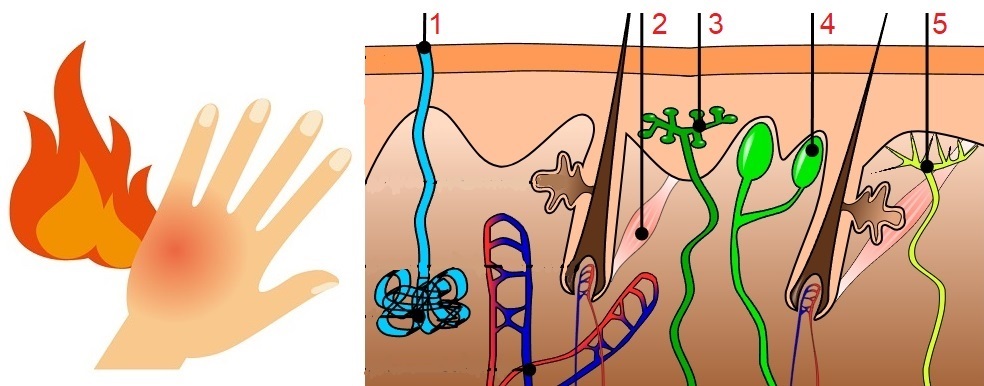The trigeminal nerve is the fifth, very sensitive cranial nerve of the facial skull. It owes its name to the fact that it is divided into three main branches, one of which also has olfactory functions. It conveys tactile (concerning the sense of touch) sensations of the facial region, which are perceived on the mucous membranes of the oral cavity and the nose during wine or alcohol consumption. These are irritative (irritating, arousing) sensations of a physical rather than chemical nature. The trigeminal stimuli are a partial aspect of haptic perception. They are not typical olfactory or gustatory sensations, although the effects are relatively strongly involved in the overall impression.

Perception
Trigeminal muscle contributes significantly to olfactory sensation intensity (about 30%). In heavy smokers, nasal trigeminal sensitivity is reduced, but olfactory (smelling) sensitivity is unaffected. Trigeminal stimuli can be perceived both positively (alcohol, horseradish, menthol, carbonic acid, paprika, pepper, mustard, onion), but also negatively (ammonia, smoke, sulphur). A typical reaction to trigeminal stimuli is increased salivation or sneezing. If strong or intense, this is a pain reaction and thus a precautionary warning signal of the body.
The capsaicin contained in peppers (chilli, pepperoni) and the piperine contained in pepper cause the trigeminal sensations of peppery and hot. The alkaloidsAlkaloid, which are very similar in their effect, trick the brain into thinking that the temperature in the mouth is critically high and produce the sensation of burning. The similarity between hot and spicy is already established at the receptor level. The same receptors also react to food that is too hot (over 43 °Celsius), which "burns" the tongue or palate. The organism counteracts this sensation, which is often painful due to apparent heating, by increasing the blood flow to the tissue for the purpose of heat dissipation. This results in a local reddening similar to a slight burn (as caused by fire or sun).

The picture shows the human skin with the receptors (3, 4 and 5) that receive the sensations haptically (active = touching) or tactilely (passive = being touched): 1 = sweat pore, 2 = muscle, 3 = pain, 4 = touch, 5 = pressure. See also under gustatory (taste), olfactory (smell) and sensory (reception of sensations).
Wine tasting terms
The terms aggressive, astringent, acrid, burning, punchy, hot, cold, cooling, peppery, tingling, pungent, tangy, pungent and pungent are used in the context of a wine approach. The alcohol content (especially in distillates), bitterness, carbonic acid, acids, tannins and viscosity have a particular influence. These impressions are therefore often confused with the sense of taste, because they are also taken in via the mouth. The term "mouthfeel" is also used for the trigeminal overall impression. Scientific studies are being conducted at the University of California in Davis (California) and at the University of Adelaide (South Australia). A "mouthfeel wheel" was developed by the AWRI in analogy to the aroma wheel in 1998, proposing 53 terms as nomenclature in the groups of dynamic, flavour nature, harsh, complexity, consistency, irritation, acidity, heaviness, texture, drying, immature, warmth and softness of the surface.
Tongue (edited): Copyright Peter Hermes Furian
Taste pore (edited): By NEUROtiker - own work, CC BY-SA 3.0, link.
Hand: PNGWING
Skin (edited): by Sgbeer - own work, CC BY-SA 3.0, link
Voices of our members

The wein.plus encyclopaedia is a comprehensive, well-researched reference work. Available anytime and anywhere, it has become an indispensable part of teaching, used by students and myself alike. Highly recommended!
Dominik Trick
Technischer Lehrer, staatl. geprüfter Sommelier, Hotelfachschule Heidelberg